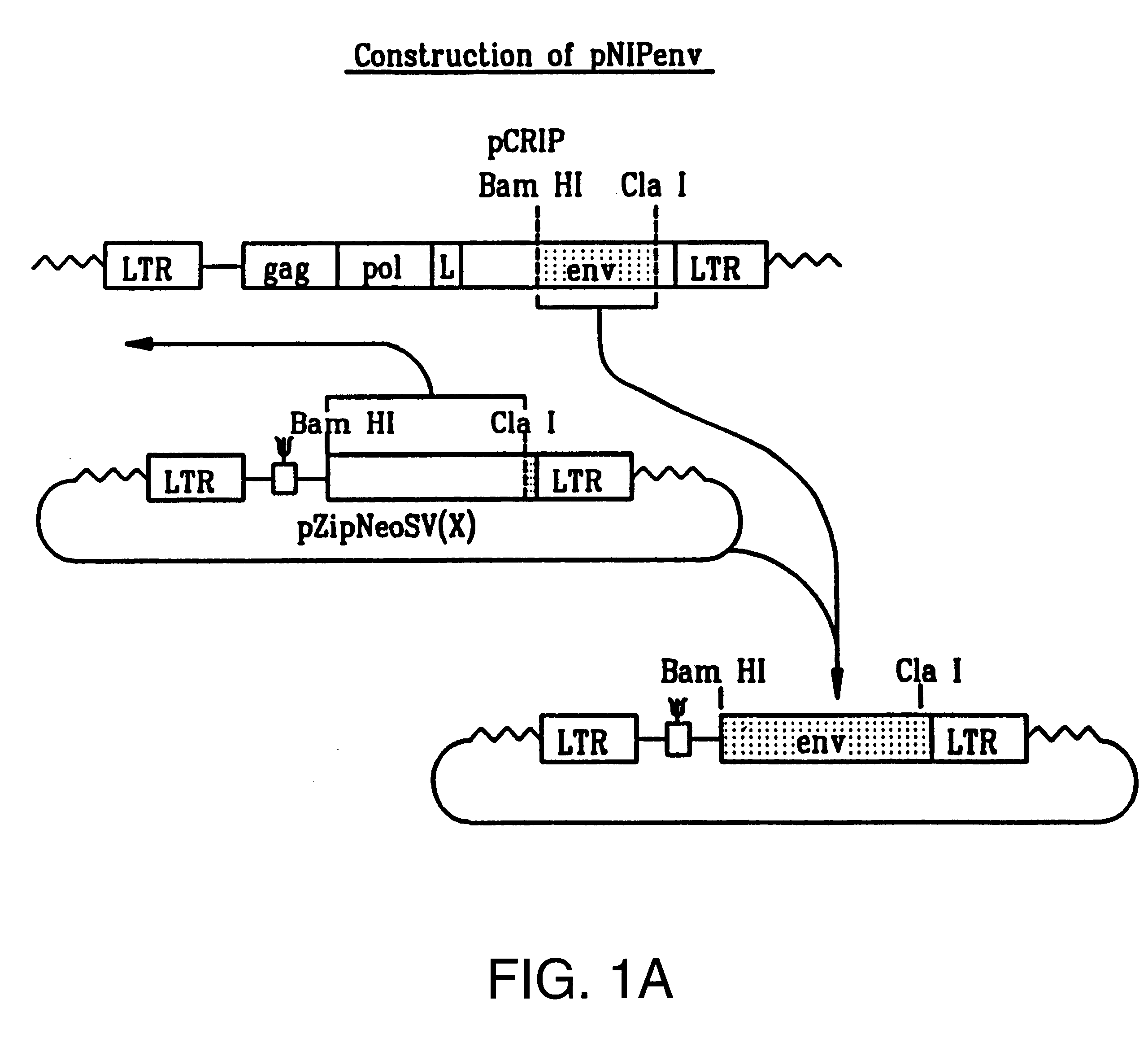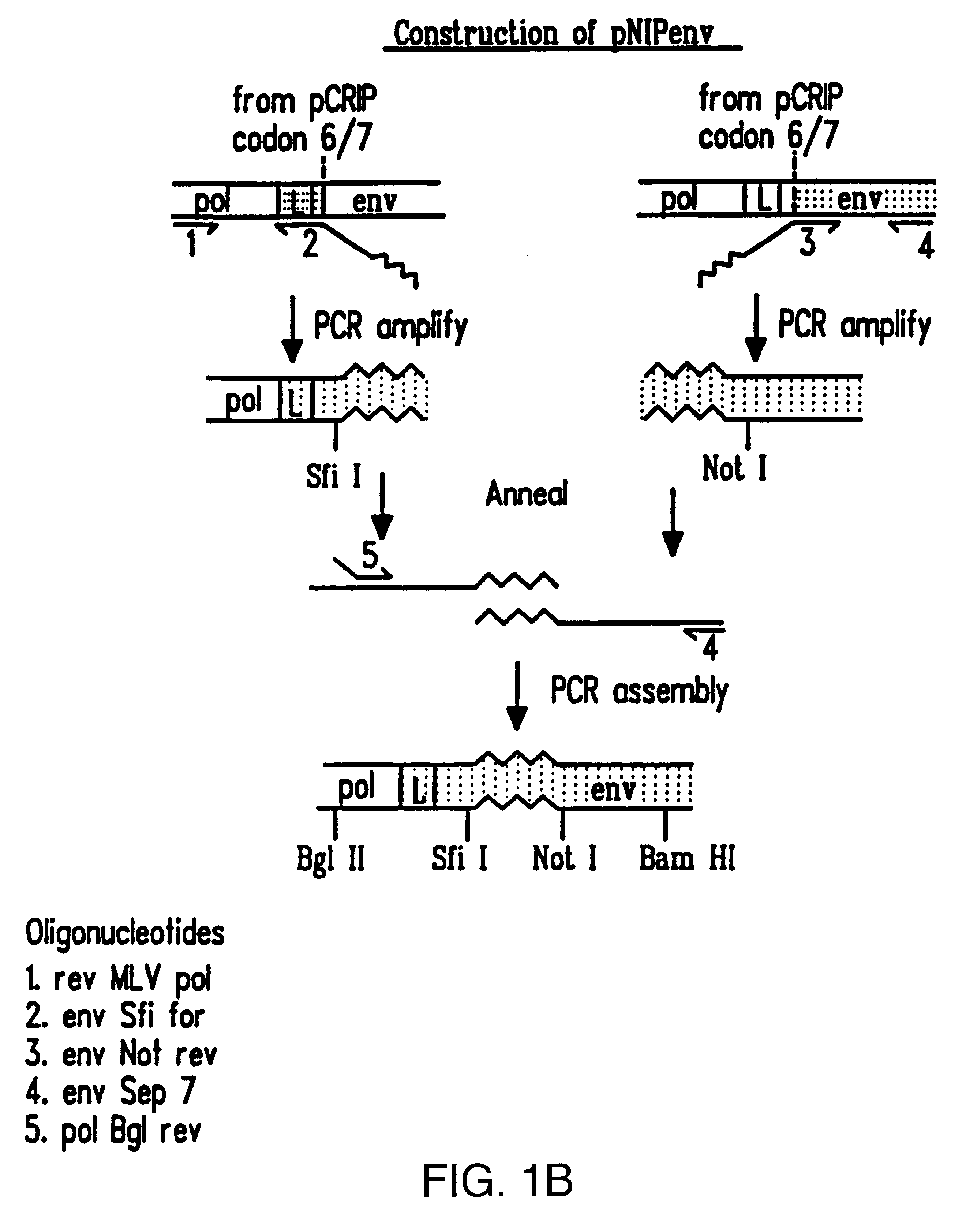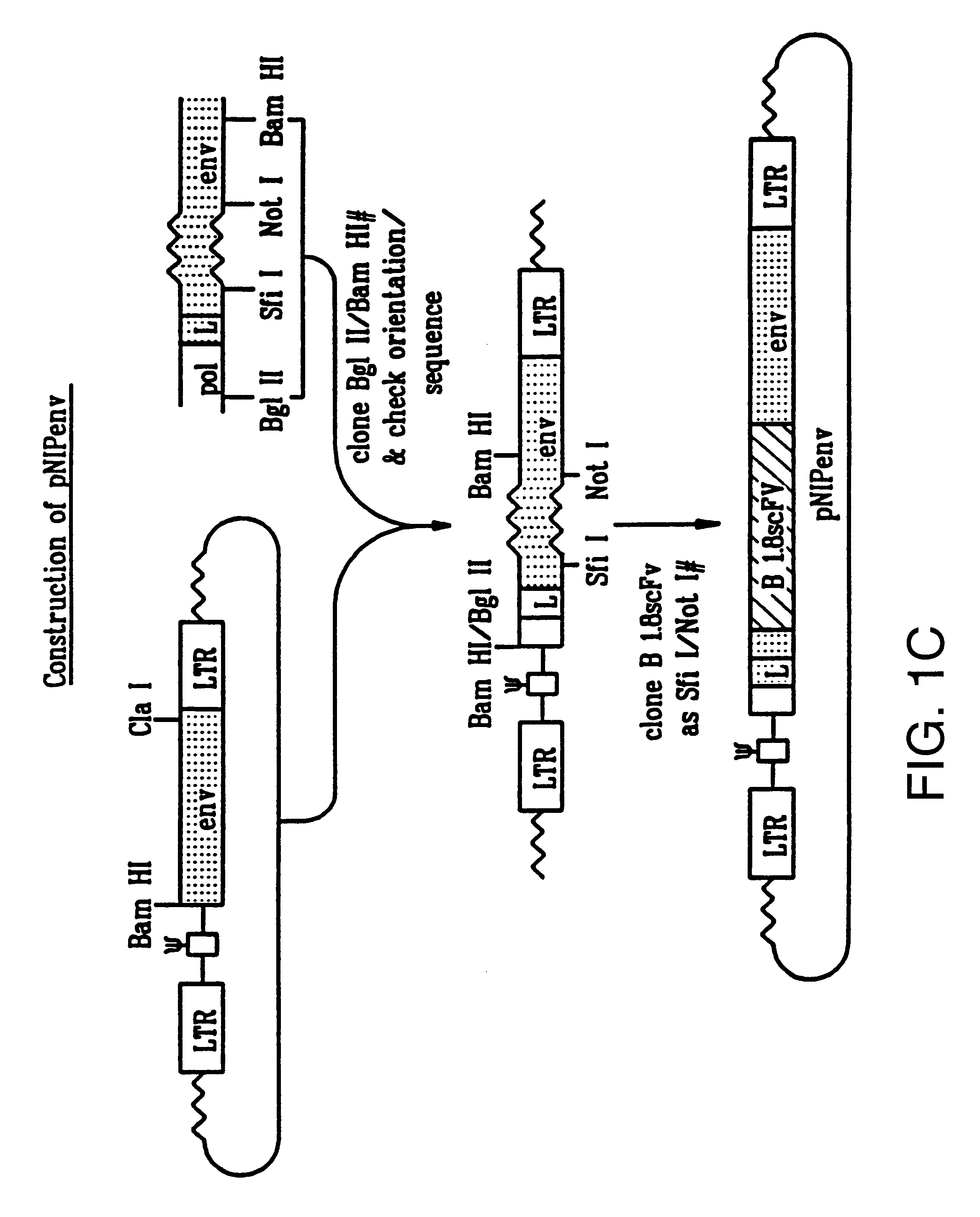Recombinant viruses displaying a nonviral polypeptide on their external surface
- Summary
- Abstract
- Description
- Claims
- Application Information
AI Technical Summary
Problems solved by technology
Method used
Image
Examples
example 1
MATERIALS AND METHODS
Plasmid Construction
The BamHI / ClaI env fragment (nt 6537-7674, nt numbering from Shinnick T M, Lerner R A, and Sutcliffe J G (1981) Nature, 293, 543-548) from pCRIP (gift from O. Danos (Danos O and Mulligan R C (1988) Proc Natl Acad Sci USA, 85, 6460-6464)) was cloned into the BamHI / ClaI backbone fragment of pZipNeoSV(X) (gift from R. Mulligan--see Cepko C L, Roberts B E and Mulligan R C (1984) Cell, 37, 1053-1062) to generate an intermediate plasmid penvBam / Cla.
A SfiI / NotI cloning site was introduced beyond the leader peptide sequence between codons corresponding to the 6th and 7th aminoacids (from the N-terminus) in the mature MoMLV env polypeptide. The oligonucleotides envNotrev (5'-CTG CAG GAG CTC GAG ATC AAA CGG GCG GCC GCA CCT CAT CAA GTC TAT AAT ATC-3' (Seq. Id. No. 1), complementary to MoMLV env nts 5894-5914 with a 33nt 5' sequence encoding a NotI site and 21nt complementary to the 5' tail of envSfifor) and envseq (Nabel E G, Plautz G and Nabel G J (199...
example 2
Host Range Modification Example
A431 is a human cell line expressing abundant EGF receptors and the monoclonal antibody 425 binds specifically to human EGF receptors. A pHen-1 derived plasmid encoding the 425 antibody as a functional, EGF receptor-binding single chain Fv was obtained from Detlef Gussow (MRC Collaborative Centre). The 425 scFv gene was cloned as a SfiI-NotI fragment into pNIPenv in place of the B1.8 scFv. The resulting plasmid (pEGFRenv) was contransfected with plasmid pBabePuro into ecotropic retrovirus packaging cells. Colonies resistant to 1.25.mu. per ml puromycin were either pooled or expanded individually and supernatant derived from these cells was passed through a 0.45 .mu.M filter and tested for its ability to transfer puromycin resistance to human A431 cells. A431 cells were infected by overnight exposure to virus-containing supernatant in the presence of polybrene (8 .mu.g / ml) and were selected for 21 days in, 0.6 .mu.g / ml puromycin. Supernatants derived fr...
example 3
Possible Examples of Novel Selection Strategies
1. This example teaches how to select for a nonviral polypeptide which, when displayed on a recombinant virus, increases the efficiency with which the recombinant virus delivers the viral nucleic acid to a human target cell through a target cell-selective entry pathway which leads to the expression of the viral nucleic acid.
In this example, the experimental conditions are set such that the viruses contained in the library display no viral surface proteins capable of efficient binding to the target cells. The specific interaction of viruses in the library with the surface of the target cells and the subsequent delivery of the viral nucleic acid is therefore possible only if mediated by the virus-displayed nonviral polypeptide.
Single-chain antibodies are pre-selected from a large (10.sup.10 diversity) random combinatorial phage antibody library for binding to the surface of the cell line K422 (Dyer et al, 1990 Blood 75 p709-714) and are s...
PUM
| Property | Measurement | Unit |
|---|---|---|
| Surface | aaaaa | aaaaa |
Abstract
Description
Claims
Application Information
 Login to View More
Login to View More - R&D
- Intellectual Property
- Life Sciences
- Materials
- Tech Scout
- Unparalleled Data Quality
- Higher Quality Content
- 60% Fewer Hallucinations
Browse by: Latest US Patents, China's latest patents, Technical Efficacy Thesaurus, Application Domain, Technology Topic, Popular Technical Reports.
© 2025 PatSnap. All rights reserved.Legal|Privacy policy|Modern Slavery Act Transparency Statement|Sitemap|About US| Contact US: help@patsnap.com



